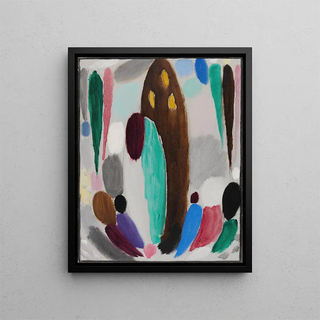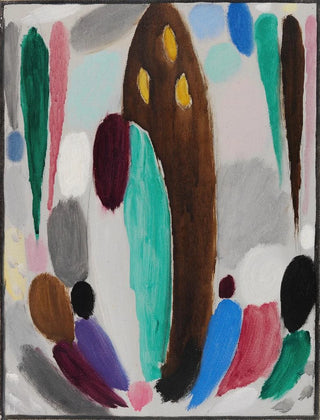Art print | Variante Ascona - Alexej von Jawlensky


View from behind

Frame (optional)
Art print Variante Ascona - Alexej von Jawlensky – Captivating introduction
In the vibrant universe of modern art, certain works emerge as beacons of creativity and emotion. "Art print Variante Ascona" by Alexej von Jawlensky is one of those pieces that transcend time and space, inviting viewers to immerse themselves in a world of colors and shapes. This piece, emblematic of the expressionist movement, evokes an atmosphere that is both soothing and unsettling, where each brushstroke seems to tell a unique story. The art print of this work allows appreciation of the richness of its visual language, while offering a window into the artist's soul.
Style and uniqueness of the work
The work "Art print Variante Ascona" stands out for its bold use of color and harmonious composition. Jawlensky, a master of abstract portraiture, manages to capture the very essence of his subjects through simplified forms and vibrant palettes. Warm and cool tones intertwine, creating a visual dialogue that immediately draws the eye. The faces, though stylized, convey emotional depth that resonates with anyone who takes the time to contemplate the piece. The way the shapes overlap and blend into each other reflects a constant search for harmony, while maintaining a certain tension that engages the viewer. Every element of "Art print Variante Ascona" seems to be an invitation to explore states of mind, to feel often unspoken emotions.
The artist and his influence
Alexej von Jawlensky, an emblematic figure of expressionism, made his mark on his era through an innovative approach to painting. Of Russian origin, he found his artistic path by settling in Germany, where he developed a unique style, combining spiritual influences and pictorial traditions. Jawlensky was an active member of the Blaue Reiter group, alongside personalities such as Kandinsky and Marc, thus contributing to the redefinition of art in the early 20th century. His work is often perceived as a quest for transcendence, seeking to express inner truths rather than simply reproducing reality. The impact of his

Matte finish

View from behind

Frame (optional)
Art print Variante Ascona - Alexej von Jawlensky – Captivating introduction
In the vibrant universe of modern art, certain works emerge as beacons of creativity and emotion. "Art print Variante Ascona" by Alexej von Jawlensky is one of those pieces that transcend time and space, inviting viewers to immerse themselves in a world of colors and shapes. This piece, emblematic of the expressionist movement, evokes an atmosphere that is both soothing and unsettling, where each brushstroke seems to tell a unique story. The art print of this work allows appreciation of the richness of its visual language, while offering a window into the artist's soul.
Style and uniqueness of the work
The work "Art print Variante Ascona" stands out for its bold use of color and harmonious composition. Jawlensky, a master of abstract portraiture, manages to capture the very essence of his subjects through simplified forms and vibrant palettes. Warm and cool tones intertwine, creating a visual dialogue that immediately draws the eye. The faces, though stylized, convey emotional depth that resonates with anyone who takes the time to contemplate the piece. The way the shapes overlap and blend into each other reflects a constant search for harmony, while maintaining a certain tension that engages the viewer. Every element of "Art print Variante Ascona" seems to be an invitation to explore states of mind, to feel often unspoken emotions.
The artist and his influence
Alexej von Jawlensky, an emblematic figure of expressionism, made his mark on his era through an innovative approach to painting. Of Russian origin, he found his artistic path by settling in Germany, where he developed a unique style, combining spiritual influences and pictorial traditions. Jawlensky was an active member of the Blaue Reiter group, alongside personalities such as Kandinsky and Marc, thus contributing to the redefinition of art in the early 20th century. His work is often perceived as a quest for transcendence, seeking to express inner truths rather than simply reproducing reality. The impact of his






